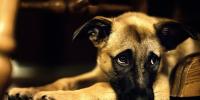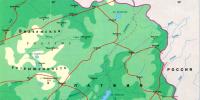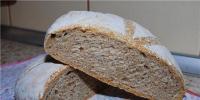Description and types of bear butterfly. What family does the bear butterfly belong to?
An Indonesian posted on his Facebook a video of a strange-looking creature that looked like a hybrid of a moth and a spider with furry legs. Commentators write that they would rather burn down their house than be near this creature. True, it turned out that this is not a monster from another planet, but a very ordinary insect before mating.
An Indonesian resident, who calls himself Gandhik on Facebook, tickled the nerves of his subscribers by sharing on Facebook a photo of a strange creature that looked like a butterfly from another planet.
After seeing the picture, people did not understand why this creature was still not on fire. Although, as the experience of a woman from Kansas shows, this is true.
“WHAT THE HELL IS THIS AND WHY IS IT STILL NOT BURNING?”
“OH GOD NO, I WILL BURN THE WHOLE COUNTRY WHEN I SEE THIS CREATION.”
People did not understand what kind of creature was in front of them, but they guessed that it was a hybrid of a spider and a moth. Or moths with caterpillars. Most people didn't want to face him anyway.
“I’d rather be dragged into hell than face this.”
“I’ll have to be revived if I step on this.”
For those who have absolutely strong nerves, there was also a recording attached to the post where the mysterious creature was moving its paws.
The video captured a bear butterfly (in Latin the name sounds like Creatonotos gangis). According to the Daily Mail, such hairy legs on these insects cannot always be seen, but only during the mating period.

With the help of these tubes - coremates filled with blood or air - male butterflies secrete pheromones. The hairs, of which there are about 3 thousand on each tube, help distribute these odors.
The size of the coremates depends on how many leaves of poisonous plants the male ate when he was a caterpillar.

But even when Facebook users found out what kind of creature was in front of them, their sympathy for him did not increase.
“Yes, it’s worse than a spider.”
"It's horrible!!! Why does this exist?!!! I would leave wherever it was and never return.”
Such butterflies are found in Asia and Australia, and now people doubt whether to go to this country. After all, there you can also stumble upon fluffy spiders, which at first glance...
“Look, honey, this is why we don’t have to go to Australia.”
But it’s not only insects that Internet users have nightmares about; spiders and bear butterflies may well give a head start to sea creatures. This fisherman from Murmansk regularly posts photos, and subscribers can’t tear themselves away from them.
5. Kaya the Bear Arctia caja(Linnaeus, 1758)
Order Lepidoptera - Lepidoptera
Ursa Family - Arctiidae
Spreading. Europe, Asia Minor, Turkestan, Siberia to Japan. Found in Kamchatka: Klyuchi (1), Petropavlovsk-Kamchatsky, Yelizovo, Nachiki, Pogranichny, Sosnovka, Milkovo (2), Zhupanovo, Kronoki, Valley of Geysers, Yelizovo (3).
Appearance. The length of the fore wing is 27–30 mm. The entire body is covered with fluffy hairs. The head and chest are dark red-brown, the back is brown with an orange-red pronotum and metanotum; the abdomen is orange-red with black transverse lines. The antennae are double-rowed and comb-like above, white. The forewings are brown with a whitish characteristic pattern. The hind wings are orange-red with black spots. At younger instars, caterpillars are black with red-yellow longitudinal stripes, at older instars they are black, with very long black gray hairs at the apex, and rusty-red hairs on the chest rings and sides. The pupa is black in a soft cocoon intertwined with hairs.
Habitats and lifestyle. Coastal forb meadows, meadows, clearings and edges in birch, floodplain and mixed forests, subalpine forb meadows. The caterpillars feed on almost all meadow grasses in the fall, overwinter in the root layer, feed again on seedlings in the spring, pupate in early July, and butterflies appear from the end of July.
Number and limiting factors. This beautiful butterfly used to be very common (3), but is now protected in several European countries (4). Found throughout Kamchatka, but rare everywhere. The literature indicates the total number of collected specimens - 46 for the period 21.07–23.08. In 1975–1976 in the vicinity of Elizovo and the village. Milkovo (2). For the entire period of our censuses in Zhupanovo during 1972–1975. and 1985–1997 The birth years of these butterflies were recorded only on 07/25–08/18/1985 (3 specimens), 08/16/1986 (1 specimen). In addition, they were registered in Yelizovo, 07/24/1987 - 1 butterfly, Valley of Geysers - 08/8–10/2001, 2 butterflies for the entire recording period. An unprecedentedly high number of them in the village was also noted. Kronocky, when in July 2000, 2–4 butterflies flew to the illuminated window at a time (5). The main limiting factors are weather and climate, among predators are shrews and bats; among anthropogenic ones - changes in habitats: fires, haymaking, plowing of meadows.
Scientific and practical significance of species conservation. The species is located on the eastern border of its range and has regional distinctive features at the subspecies level. Has aesthetic value.
Butterflies are usually brightly and variegated in color, with a thick body, and more or less large. Unlike cutworms, the abdomen is often brightly colored, with spots or stripes that stand out against the general background. Small species are mostly not brightly colored. Males have comb-like antennae, bare eyes, and a short proboscis, often reduced. Gus. very hairy (hence the name of the family). Most species of this family feed on grasses, plants, geese. lichens - on lichens and liverworts. Over 50 species have been discovered in the European part of the USSR.

1.! URSA BEAR (Arctia caja L.). 47-80 mm. Years in VI-VIII. The species is very variable. Range - almost the entire European part, the Caucasus, Central Asia and Siberia. Gus. polyphagous, feed on a wide variety of grasses, plants, as well as some trees and bushes. Black, with very long black hairs, gray at the tip. At the end of spring they live in meadows, on many grasses. rast. The pupa is black, in a soft cocoon with woven hairs.
2. VILLAGE BEAR (Epicallia villica L. (Arctia). 50-60 mm. Years VI-VII. Common, except for the northern ones. Hussies live on plantain, nettle, yarrow, strawberry and other herbal plants. Because variations in the pattern on the wings of butterflies distinguish several of their varieties. They are distributed in the southern and middle regions of the European part, in the Caucasus and Central Asia. They are black, with brown hairs and a dark red head, the pupa is black, the abdominal rings are with red cutouts, and are white. - gray cocoon.
3.! URSA HERA (Euplagia quadripunctaria Poda. (Callimorpha hera L.). 50-55 mm. Years at the end of VII-VIII. Range - middle zone, south. Flies during the day. Distributed in the southern, partly in the middle regions of the European part, on The Caucasus and Central Asia. Loves mountainous areas. Hus are found on plantain, clover, gorse, oak and beech. The lutenscens variety has yellow or orange stripes. The hind wings and abdomen are not red, but yellow.

4. HOST BEAR (Pericallia matronula L.). 70-80 mm. Years in VI-VII. It is found in the middle regions and southern Siberia. Gus. live on bird cherry, honeysuckle, hazel, hawkweed, plantain, blueberry, dandelion, etc. The color is dark brown.
5. URSA HEBE (Ammobiota hebe L. (Arctia). 47-53 mm. Years in V-VII. Range - middle and southern regions of the USSR, the Caucasus, Central Asia, Southern Siberia. Not common. Gus. develop on yarrow , milkweed, quinoa, dandelion and other herbs. Black, with long gray-black and rusty hairs.
6. LADY BEAR (GIRL) (Panaxia dominula L. (Callimorpha). 45-55 mm. VI-VII years old. Flies in the middle, southern and partly northern regions, in the Caucasus. Females have red hind wings and abdomen, males are yellow. They are polyphagous, live on various grasses, plants, nettles, strawberries, raspberries, willows, poplars, etc. Black and blue, with yellow hairs and spots on the back and sides.
7.! PURPLE DIPPER (Rhyparia purpurata L.). 42-45 mm. Flies during the day, in VI-VII. Gus. polyphagous, develop on wormwood, yarrow, plantain and other herbs, less often on willows, bird cherry, raspberries, apple trees, etc. The butterfly is common in our middle, northern, and partially southern regions, the Caucasus and Southern Siberia. Gus. black, with reddish and yellowish hairs. Butterflies need protection.

8. MEADOW BEAR (Diacrisia sannio L.) - male. Males 40-48 mm, females 35-42 mm. Years in VI-IX. Gus. develop on nettle, bedstraw, plantain, dandelion and other herbs. rast.
9. MEADOW BEAR - female (smaller than male).
10. BLOODY BEAR (Hypocrita jacobaee L.). 30-39 mm. Years in V-VI. Gus. live on the godson. The butterfly is cylindrical, black, found throughout the European part, except the northern part, but with gaps.
11. Plantain bear (Parasemia plantaginis L.) - male. 32-37 mm. Years in V-VII. It is found almost throughout Europe and Siberia, in forests. Gus. live on plantain and other herbs. rast. The color is black, with red in the middle.
12. Plantain bear - female.
13. POPLAR LICHEN (Eilema complana L. (Lithosia). 32-35 mm. Years VI-VIII. In our country it is widespread in the middle regions in coniferous forests. Gus. live on various lichens; blackish, with a black dorsal line with white spots.
14. AMERICAN WHITE BUTTERFLY (Hyphantria cunea Drury.) - male. 25-40 mm. Years in V-VIII. Area - southwest. Gus. polyphagous, damage up to 200 garden, forest and agricultural plants. When they multiply in masses they are very harmful. The butterfly was brought from the USA at the beginning of the Second World War (discovered for the first time in Hungary, and in 1952 in Transcarpathia).
15. AMERICAN WHITE BUTTERFLY - female.

16. WHITE STRIPED BEAR (Coscinia cribraria L. (Callimorpha cribrum L.) - female. 38-43 mm. Years VI-VII. Geese. Found on heather, cereals and other herbal plants.
17. YELLOW STRIPED BEAR (Euprepia striata L. (Callimorpha, Coscinia) - male. 32-35 mm. Years VI-VII. Geese live on heather, cereals, wormwood and other herbal plants.
18. BROWN-YELLOW BEAR (Huphoraia aulica L.). 35-40 mm. Years in V-VI. Gus. develop on peas, plantain, yarrow and other herbs. rast.
19. MOCKED BEAR (Spilosoma menthastri Esp.). 35-42 mm. Years in V-VI. Gus. live on nettle, buckwheat, mint, sorrel and other herbs. rast.
20. URSA SPOT (Utetheisa pulchella L.). 32-40 mm. Years in V-IX. Area - MS. strip, south. Gus. develop on plantain, forget-me-not and other herbs. rast.
21. BROWN BEAR (Phragmatobia fuliginosa L.). 32-38 mm. Years in V-VIII. Area - MS. strip, south. Gus. polyphagous, live on grass. rast. Sometimes they harm beets and other garden plants.
22. FOURSPOTTED LICHEN (Lithosia quadra L. (Oeonistis) - female. 44-52 mm. Years VI-VIII. Found everywhere except in the north. Hussies. live on lichens, trunks of oaks, beeches, pine trees, chestnuts and fruit trees, often on the leaves of these trees.

Ursa butterflies (Arctiidae) are a large family; About 8 thousand of their species are known all over the world, which is almost one and a half times the number of species of all modern mammals! They are distributed throughout the world, and in the European part of Russia there are at least 60 species of bears.
Family Features
The family owes its name to caterpillars whose bodies are covered with long, dark brown hairs so thick that they appear to be dressed in bearskin. Most caterpillars of these butterflies have hairs collected in tufts-tassels, sitting on special protrusions-warts. This “fur coat” protects the bear caterpillars from enemies. Caterpillars lead a relatively secretive lifestyle, feed mainly on herbs, and in lichen bears they switched to feeding on mosses or lichens growing on tree trunks
Dippers are medium to large sized butterflies with a plump body. Large species of this family are very brightly and variegatedly colored, but many smaller species are gray and inconspicuous. The front wings are triangular in shape, the hind wings are smaller. Almost all female bears lead an evening and nocturnal lifestyle. Let's meet some of the most interesting views closer.
Kaya bear
One of the most famous representatives of the family is bear kaya(Arctia caja). Its habitat includes Europe, Asia and North America. This species is common in central Russia, as well as in Siberia and the Far East. The kaya's wingspan is 6-7 cm. The upper side of the wings is colored in brown and white shades and has an irregular winding pattern, the hind wings are red-orange, with round black or blue spots.
The kaya's proboscis is underdeveloped, so it does not feed throughout its short life.
Ursa Hera
The bear, named after the wife of Zeus, the goddess Hera, is easily recognized by three oblique light lines on the front wings and black spots on the red hind wings. The Hera bear (Euplagia quadripunctaria) lives in Europe (except for the northern regions) and Central Asia. It is found on forest edges and clearings, among shrubs in the zone of deciduous forests. In terms of flight time, Hera is a late-summer species - these butterflies fly in July and August. Unlike most other bears, Hera flies during the day. The caterpillars of this butterfly hibernate.

Human economic activity is leading to the destruction of hera habitats, and today it has become extremely rare in many places.
Transcaspian gloomy bear
This is one of the largest representatives of the family - its wingspan often exceeds 10 cm! The species surprises not only with its size, but also with its way of life - Trans-Caspian gloomy bears (Axiopoena maura) prefer to live among rocks and in caves! It is also unusual that the caterpillars of this species live very far from caves in mixed-grass steppes.
This amazing butterfly is found in India, Afghanistan, Pakistan, Iran, Transcaucasia and Turkmenistan
Lady bear
The lady bear (Callimorpha dominula), unlike the previous species, cannot boast of large sizes (its wingspan is only 4.5-5 cm), but it is very beautiful. The front wings are colored in dark shades with light spots, the hind wings are orange or bright red with dark spots.

The lady bear is widespread in Central and Southern Europe, the Caucasus and Transcaucasia. Prefers damp and open places - clearings, grassy slopes, ravines, clearings of deciduous forests.
Village bear
Spreading: in Europe, North Africa, in the Palearctic zone up to India. Lives in light forests, bushes and meadows.
Wingspan 50-65 mm. The length of the front wing is 25-30 mm. The color of the upper side of the wings is black and white with an irregular sinuous pattern, characterized by great variability. The upper side of the hind wings is yellow with black spots. The head and chest are dark, red-brown, the abdomen is red, with black dots in the center. Butterflies are characterized by polymorphism
Red-spotted bear
The red-spotted bear (Utetheisa pulchella) is a relatively small species, found in southern Europe, Africa, Central and South Asia. It got its name from the bright pattern on its wings. This one is pretty rare view mainly found in grasslands.
Purple Dipper
The purple bear (Rhyparia purpurata) is found in Europe and Asian regions from temperate climate. Settles on dry heather heaths and sandy soils. Its wingspan is 3-4.5 cm. The front wings are yellow, with individual brownish spots, the hind wings are orange-red.
Belongs to the family of bears Arctiidae, numbering 6,000 species in the world. There are about 90 species in Russia. One group of bears is called lichen bears, they are thinner, faded and not furry. Another group is the true bears - butterflies with a thick spotted abdomen and comb-like antennae. Often butterflies are very variegated in color - black, yellow, red, white. Most bears are twilight-nocturnal species; there are also several species that are active during the day.
It is believed that the thick “fur” of the caterpillars helps them insulate themselves on cold nights. In any case, the butterflies were called “bears” for this thick hair covering of their caterpillars. Warty hairy bear caterpillars feed on a wide range of host plants, but they are especially fond of different herbs.
Among the bears there are pests - for example, the American white butterfly Hyphantria cunea. Young caterpillars of the American white butterfly build a web nest and live together in it. During the day, the caterpillars leave the nest and eat leaves, and in the evening they return to it and spend the night together. Having matured, the caterpillars leave their “native nest” and live alone, and then pupate.
Caterpillars of the bear Spilarctia imperialis also live in colonies, constructing a common web nest. This helps protect against many non-specific predators - not just any insect will get into the thick of the web. But the ground beetle Parena perforata lives right in these nests. More precisely, its larvae live in the nest and feed to their heart’s content without leaving the nests of these caterpillars. The only thing that limits the larva is the size of the caterpillar: small ground beetle larvae cannot cope with a hefty caterpillar and are forced to make do with small caterpillars.
The Kaya bear is one of the most common in our country; it is distributed from the European part of Russia to Siberia and Far East. This relatively large butterfly reaches 80 mm in wingspan. The butterflies are found in July-August and their wings vary in colour, but are usually brown with a yellow and white pattern - a good example of distinct colouration. The hind wings and abdomen are brick red with shiny black spots. An alarmed female bear immediately opens her “camouflage” on her front wings, showing black or blue eye-shaped spots on her red hind wings, and immediately shoots a toxin from the glands located in her abdomen at the enemy struck by her red underwear. The caterpillars, like most bears, feed on herbaceous plants, and also on honeysuckle, mountain ash, willow, and can eat raspberries and apple trees.
It is known that many butterflies (including bears) hear well. Between the chest and abdomen, bear butterflies have a tympanic organ that hears ultrasound in the range of 3-100 kHz. Thanks to this organ, the butterfly hears an ultrasonic cry bat who is tracking her. After this, he performs an anti-mouse maneuver, falls with a turn, sits down and waits until the danger has passed.
Ursa bears are famous as the most talkative family of butterflies. Indeed, many of them make a variety of sounds. At the same time, some bears have a perfect sound apparatus (like cicadas): the timbal plates, sharply returning to their place after the muscles change their curvature, emit a loud sound. The bear butterfly locates the bat and can communicate with other individuals of its species. Some female bears can emit sound using special “castanets,” which are dense chitinous plates on the edges of their hind wings. When the wings are brought together, the plates hit each other and click. Moreover, the chamber under the folded wings serves as a resonator, amplifying the sound.
Some female bears were not satisfied with passive sound defense (evading encounters with a bat), but themselves went on the offensive: Cycnia tenera produces ultrasonic clicks of considerable force (“ticks”), which prevent bats from finding their direction. Other bears are inedible for bats. And in order to reduce the number of mutually unpleasant conflicts, mother bears, in response to the “hunting howl” of a bat, emit identification ultrasonic signals that allow them to be distinguished from other edible butterflies - something like “I am completely inedible, and you know it.” This signal is “read” by the bat as an indication that the object is inedible.
It is less known that butterfly caterpillars also hear and this is very beneficial for them. Many wasps, such as ammophila wasps, hunt butterfly caterpillars to feed their larvae. So, they track caterpillars by smell - they “sniff out” the caterpillar along the trail in the grass forest. And the caterpillar hears the wasp: it perceives its buzzing and hides - it freezes or falls from the blade of grass. True, she can hear it from a maximum of ten centimeters away, but sometimes this even saves the caterpillar’s life - how come the winged huntress hasn’t yet seen the fat caterpillar’s body, still wandering between the stems?




